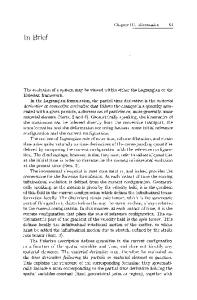Statics and Kinematics
The statics and kinematics of simple framed structures are presented in the setting of small displacements and deformations. Firstly, the similarity of mathematical form between structural mechanics and other engineering problems is expressed in terms of
- PDF / 29,277,993 Bytes
- 433 Pages / 481.89 x 691.654 pts Page_size
- 8 Downloads / 406 Views
MATHEMATICAL PROGRAMMING METHODS IN STRUCTURAL PLASTICITY
EDITED BY D. LLOYD SMITH IMPERIAL COLLEGE, LONDON
SPRINGER-VERLAG WIEN GMBH
Le spese di stampa di questo volume sono in parte coperte da contributi del Consiglio Nazionale delle Ricerche.
This volume contains 132 illustrations.
This work is subject to copyright. All rights are reserved, whether the whole or part of the material is concerned specifically those of translation, reprinting, re-use of illustrations, broadcasting, reproduction by photocopying machine or similar means, and storage in data banks. © 1990 by Springer-Verlag Wien Originally published by Springer Verlag Wien-New York in 1990
In order to make this volume available as economically and as rapidly as possible the authors' typescripts have been reproduced in their original forms. This method unfortunately has its typographical limitations but it is hoped that they in no way distract the reader.
ISBN 978-3-211-82191-6 DOI 10.1007/978-3-7091-2618-9
ISBN 978-3-7091-2618-9 (eBook)
PREFACE
Civil engineering structures tend to be fabricated from materials that respond elastically at norma/levels of loading. Most such materials, however, would exhibit a marked and ductile inelasticity if the structure were overloaded by accident or by some improbable but naturally occurring phenomenon. Indeed, the very presence of such ductility is an important safety provision for large scale constructions where human life is at risk. In the mathematical theory of plasticity there is found a material mode/which is both fairly simple and generally representative of the essential characteristics of observed behaviour. It must be considered unrealistic, therefore, not to include the effects of plasticity in the comprehensive evaluation of safety in a structural design. Mathematical Programming (MP) is concerned with seeking to optimise a function whose variables are also required to satisfy additional conditions or constraints. Such constraints may be represented by systems of equations, or of inequalities, connecting the variables, and they would include the possibility that some of the variables might be constrained in sign. It is clear that the search for a solution to a system of inequalities, or of equations, without the optimising of a function is a special case of the above problem.
During the second world war, the need to address complex problems ofplanning and resource allocation for economic as well as military purposes coincided with the increasing availability of largescale computing facilities. This provided the climate for the rapid developlment of MP, and, since the mathematical description ofplasticity necessarily involves inequality conditions, it was not long before the link between these two subjects was established. In the ensuing twenty-five years there has been a thorough investigation of the role of MP in all the major problem types in structural plasticity. The appeal of MP in this context has been twofold: computational and theoretical. MP can provide a ready fund of general algo











